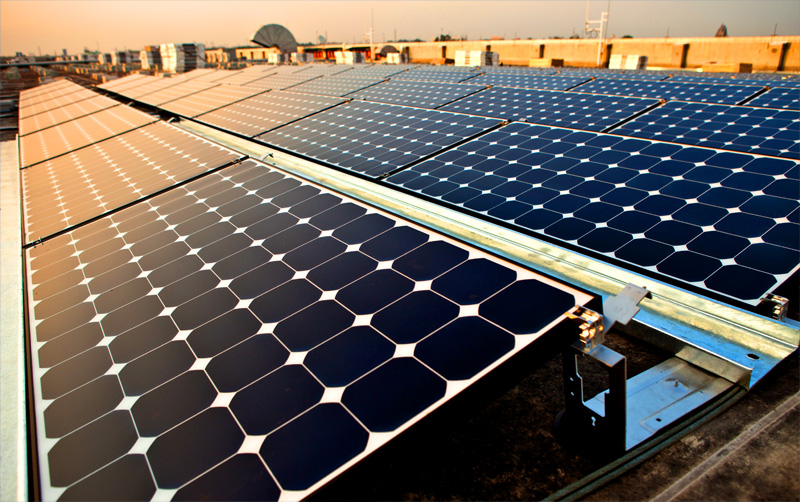Could your state require solar panels on homes?
How California’s new rule could revolutionize rooftop solar
Today is the Summer Solstice, the longest day of the year in Earth’s Northern Hemisphere. It’s a day to remind ourselves that beyond those few extra minutes of brilliant light, the sun’s rays hold a virtually limitless stream of clean, renewable energy. If fully tapped, this power could save our planet from irreparable harm caused by burning fossil fuels.

Photo credit: Intel Free Press via Flickr CC BY 2.0
Across the country, solar power is growing at an incredible rate: We now generate enough solar energy to power more than 10 million American homes.
In California, officials just took another huge step forward. A recent unanimous decision by the California Energy Commission (CEC) mandates that all newly-built California homes will come with solar panels, beginning in 2020. This makes California the first state to set such a policy.
So, why do this? And could it happen in your state?
The fact is, all of us must do more to make sure we leave a livable planet for our children and grandchildren. In spite of the strides made to ramp up renewable energy usage in states across the country, every time a new house plugs into the power grid, it still relies on fossil fuels that pollute our air and contribute to global warming.
In California, an average of 80,000 new homes are built each year. That’s 80,000 places where renewable energy can be installed, stored and used at the source. When the state implements its new requirements, the energy commission expects the solar panels installed on these homes — combined with efficiency measures — will reduce emissions by an amount equivalent to taking 115,000 fossil fuel-powered cars off the road in just three years.
The rule is expected to save Californians millions in energy costs. The commission estimates that while solar panels may add around $40 per month to an average mortgage, owners of new homes should see savings of about $80 per month on their utility bills. That doesn’t even include the savings on harm to our climate, air, land and water — and the correlating harm to our health.
Californians are now primed to reap these benefits. Just imagine how such a policy could help your state reduce emissions while lowering energy costs.
This decision in California has been a long time coming. Back in the early 2000s, state utility commissioners set a goal for all new residential buildings to be net zero energy by 2030, meaning these homes must generate at least as much energy as they use from solar or other on-site renewable resources. The new rule simply helps to meet that goal. Combined with programs such as California’s Million Solar Roofs Initiative and the state’s “50% by 2030” renewable energy standard, the solar rooftop requirement will keep California on track to lead the country to a future powered by clean, renewable power.
So, could officials in your state make this happen? The answer is yes, but the devil’s always in the details.
To set the new rooftop solar requirement, California officials changed the state’s building code to require solar panels on new homes, starting in 2020. That policy could likely be put into effect in any state; it’s just a matter of which body of government controls the building code. The case for setting this policy in California is largely built on saving energy through the building code; adding rooftop solar to new, efficient homes should cut energy use by more than 50 percent.
There are additional benefits to bringing the value of a distributed, local power grid to our neighborhoods. More panels on rooftops mean less need for expensive power plants and transmission lines, and less power getting lost in the ether during delivery. Smart grids powered by solar homes can keep the lights on during disasters. Paired with increasingly robust battery storage, solar-powered homes run on clean energy when the sun goes down. The more homes that use a combination of solar and battery storage, the less need we have for so-called “baseline” power coming from dirty power plants.
Let’s remember that every year, enough sunlight shines down on the United States to provide 100 times more power than we need. We’re still capturing only a tiny percentage of it, even as the technology for collection and storage has improved by leaps and bounds. Harnessing and storing more of this energy will mean cleaner air and a more stable climate, less strain on natural resources, and more resilient communities. We’ll be able to shift from fossil fuel dependence to an energy source that will be virtually pollution-free for as long as we can imagine.
At this point, any new home or building constructed without solar power is a missed opportunity. On this Summer Solstice, let’s continue to take advantage of as many opportunities as we can for a cleaner, greener country.

